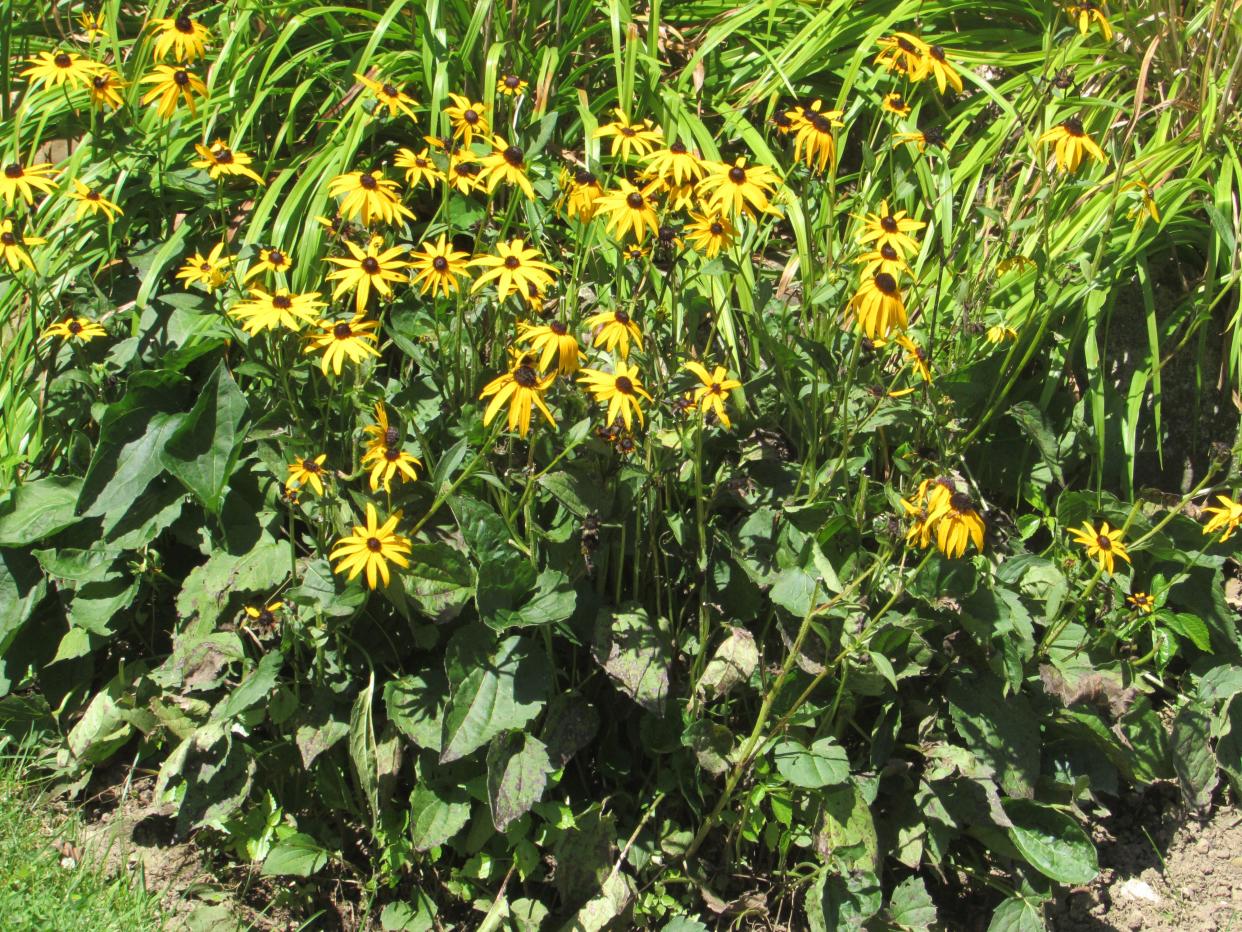A Stroll Through the Garden: When and why to divide perennials

This past weekend I got a question from one of my friends at church. My friend asked me what we can do with the extra plants you get after you divide black-eyed-Susan and purple cone flowers. Off the top of my head, I would recommend you plant them in your own yard first. That way you can be sure you are not exporting a disease, an insect pest or a weed you just don’t want to give to a friend.
I was on Facebook and talked with an administrator of one of my favorite plant pages, “Ashland Ohio Plant Enthusiasts,” and she said she would not have any problems with people posting plant exchanges or giveaways and helping with the plants. Theresa Warner has a level of expertise that she should be able to help with most challenges. She also can ask me for help.
For myself, I have traded, purchased and just picked up plants that lost their home. I still have some of each of these plants in my own yard. My dad really enjoyed peonies and grew maybe six or seven varieties. Sharon, my wife, during our first spring together 24 years ago received a bouquet of peonies almost every other day while the peonies were in bloom. I bought one bouquet, mostly peony, regularly. Guess I won her over because I wound up making a bed just for peonies. We still go over to the bed and smell the incredible scents when they are in bloom. It's hard to believe the season for peonies is over already this year.

Keep in mind my dad had many plants. What we did was to divide the peonies and plant some in my yard. The peonies caught and are still doing great. There was a weed that hid in the clumps of soil clinging to one of the peonies. That weed is called field bind. If you have been following my column for a time, you will have read how hard it is to get rid of this plant. I addressed getting rid of this weed for some time, but I still have it in the original bed. It came back after all the work I did. This field bind weed is the weed I have had the greatest problems with over the years. All I can say is be cautious with anything that you put in your garden.
Tips for dividing plants
We are coming to the close this past week of the best time for dividing perennials, ornamental grasses and grass-like plants. From April to June you will find perennials do the best after being divided. Bottom line though is each plant should be looked at on an individual basis. Some plants do better when divided in late summer or early autumn.
I have found the best time to divide plants is similar to pruning flowering plants. In other words, divide perennials or prune flowering shrub after the plant has flowered. Otherwise divide the perennial as it emerges in early spring. The best for dividing as I have stated previously is to look at each plant species individually and do the necessary research.

I want you to keep this one idea in mind — not all perennials need to be divided just as not all ornamental trees need to be pruned. Here are four good reasons to divide your perennials:
Divide the transplants to get more of that perennial.
If your perennial has spread to where the perennial is not wanted, get rid of those plants.
Clumping perennials can reach a point where they can kill themselves and leave hard bald spots in the middle. This removal will improve the appearance of the plant.
The most important reason for dividing perennials is to improve their health and longevity.
We all need to keep these facts in mind as we look at our gardens and make decisions as to whether to divide perennials in your garden.
More often than not dividing perennials is just the improvement your plants need for rejuvenation. If you set up a transplant bed and amend the soil, you can have many new plants for yourself and your friends.
I've been enjoying the coreopsis, the purple cone flower, ninebark, geranium, hydrangea and more in bloom. If you drop me an email, I shall send you a link to a list of perennials and when they should be divided. When you are taking your stroll through your garden and see an issue, drop me an e-mail at ericlarson546@yahoo.com. Thank you for participating in our column. Soon I shall be putting more columns on my website at ohiohealthyfoodcooperative.org.
Eric Larson of Jeromesville is a veteran landscaper and gardening enthusiast and a founding board member of the Ohio Chapter of Association of Professional Landscape Designers.
This article originally appeared on Mansfield News Journal: A Stroll Through the Garden: It's a good time to divide perennials

